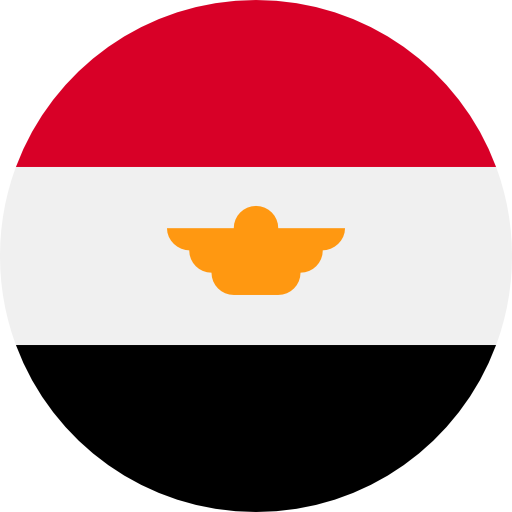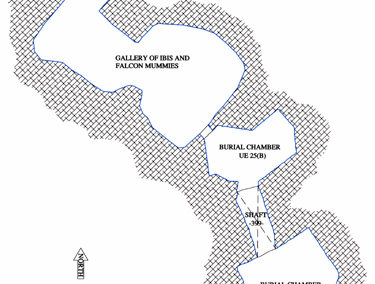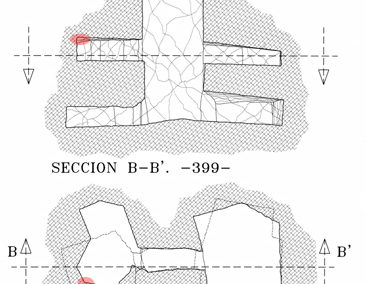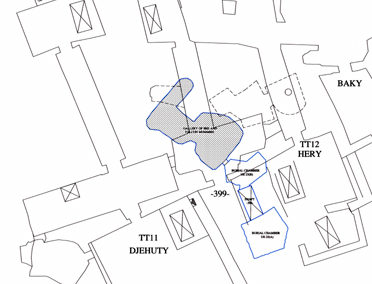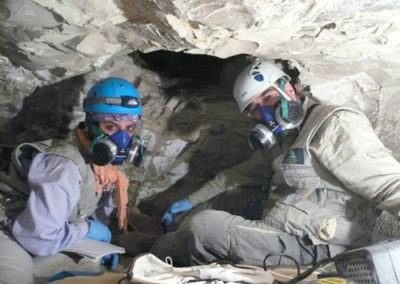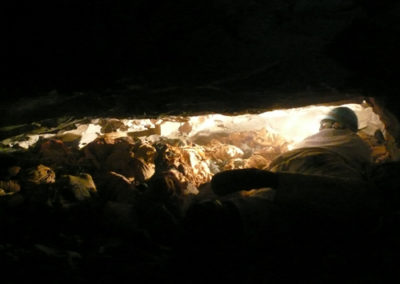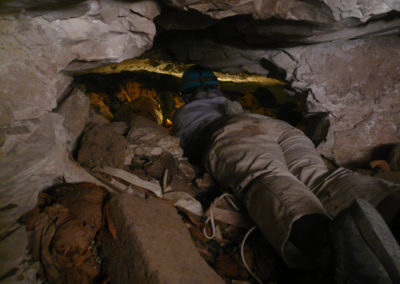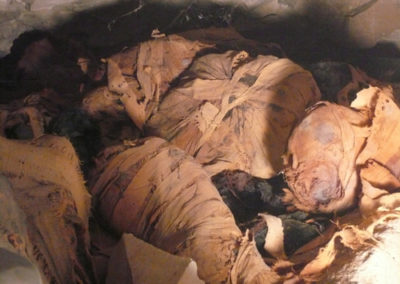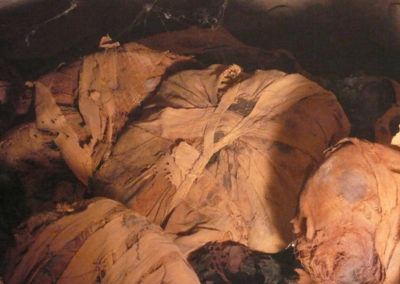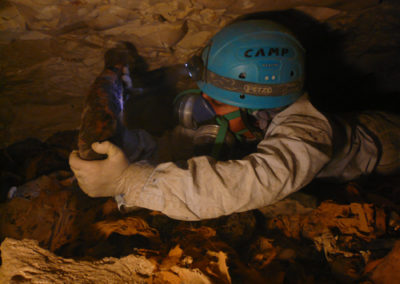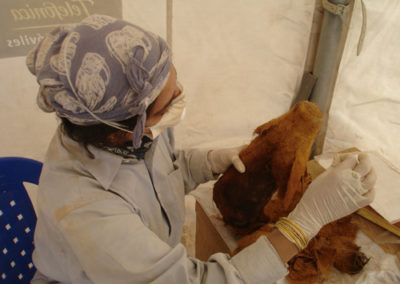The courtyard of tomb –399– has a shaft at its north-eastern corner, next to the façade and entrance door. The upper funerary chamber that opens at the northern side of the shaft was virtually empty, save for a few bird mummies that had fallen into it from an adjacent chamber through a hole in the rock of oval shape, measuring 0.70 x 0.35 m. The access to this slightly higher chamber had been blocked externally (i.e. through the funerary chamber) with mud brick and mud plaster that still shows signs of blue, white, and pinky orange paint. This does not look like an official, or at least main, access. However, at this time this is the only clear access route to this hypogeum.
From the virtually empty well-cut funerary chamber one climbs up into the second chamber. This is full of bird mummies. Its height is not clear as the mummies obscure the floor. There is an average of about 60 cm between the top of the layer of mummies and the ceiling. The height of the rooms might be 1 m or more likely, 1.25-1.5 m. Many of the bundles had come open through the ravages of time, and lots of crunchy blackened bones, bits of feather, and fragments of linen were scattered about.
The first chamber was roughly trapezoidal, as the poor quality of stone had obliterated any clear corners (if they had existed). It measured 3.7 m in width (north-south) and 2.36 m (south) to 3.5 m (north) in length (east-west). This led to another larger irregularly shaped chamber (somewhat L-shaped) whose width varies from 1.96 m (in the east) to 2.02 m (middle), and 4.6 m (west) at its end. Its length is 2.6 m (east-west). At the entrance to this room, to the left (roughly the south) is a hole in the ceiling that connects to a higher chamber that also contained bird mummies; some of these are spilling into this lower chamber. The area beneath the hole and around it has a scatter of large chunks of limestone and mud-bricks. These bricks measure 30 x 14 x 12. A few human arm bones of a mature individual were noted in the hole and in the debris below it. The stone of all of these rooms is of a very poor quality that is difficult to carve well.
The bird mummies are dense on the ground, but do not show a clear sequence of deposition. The access for depositing them is also unclear. The bundles come in a variety of shapes and sizes. Many are of the almost tear-shape that is so typical of ibis mummies, while others resemble flattened bowling pins that were easy to stack. Several of the mummies were clumped together in groups of threes, fours, or fives and then wrapped up in larger pieces of linen that are then tied with bandages, like ribbon-wrapped presents. A few of the mummies are wrapped so that they have upturned feet—this shape is generally associated with raptor mummies. The majority of the mummies in the bird galleries belong to ibises, or are derived from them, presumably due to the difficulty in obtaining raptors.
These mummies are very badly made with a series of spirally wrapped bandages enclosing the animals. The bandages are black, brittle and look burnt, although they are not. The blackening is due to the embalming agents that were hot (boiling?) when they were applied to the birds. Packages that are half open show that the bones are all coated with a black shiny substance and in many cases the feathers are totally carbonised. In many instances it is impossible to separate the birds from the substance as they are so embedded (e.g. Bird 3). Only in a few instances are some of the feathers unburned. The majority of mummies were probably made by dipping the bird into a vat of boiling resin or pitch and then wrapping it up in linen bandages. The final layer of bandages that is most exterior is often not burnt, or only slightly blackened as the resinous material has not sunk through. The quality of linen that was used to wrap the mummies varies, but most of it is solid and dense. It is frequently reused from other garments as shown by darns and sewn seams. The black substance varies from package to package. Some seem to contain a higher amount of resin than others. The majority are a combination of oil and perhaps pitch or bitumen, with a small amount of resin mixed in.
A sample of packages was taken for further study and unwrapping. One (Bird 1) of these contained a few bones embedded in the black goo. These were wrapped in a shroud then wrapped with spirally bound bandages that averaged between 4 and 6 cm in width. These were covered in string that was wound vertically and horizontally around the package and secured by a few more layers of spirally bound bandages. The bones have been tentatively identified as belonging to a raptor. Other mummies merely contained ibis feathers that had been tied together with papyrus and then wrapped before being coated with the black substance. The majority of the mummies contained ibises that were positioned as if they were seated. Their heads are either pushed back over the back (Bird 2) or tucked under a wing (generally the right wing). It is unclear if they were killed by having their necks broken or if they died through natural means (rather unlikely given their number and the tendency to kill votive offering in order to prepare the mummies ). They do not seem to be eviscerated and there is limited residue of natron or salt. Many of the ibis mummies alternated their bandage layers with linen thread that was wound around the birds in no regular pattern.
The agglomeration of mummies wrapped in a large piece of linen that was secured by knotting its ends were always very blackened and ill prepared. The larger pieces of linen that contained the 4 or 5 mummies were, in at least three cases, very interesting (Bag II in particular) as they show strips of a different weave stitched onto the plainer linen. An example of this was handed in to the conservator for conservation and study. One of these bags (Bird 4) was inscribed in reddish-brown ink on one side in Demotic, with an ankh drawn in the centre of the text. This remains to be translated and might tie in with the Demotic graffiti found in TT11 and TT12. None of the other bags examined were inscribed.
A head of a raptor that had separated from the rest of the mummy was also recovered from the catacomb. This raptor (species yet to be identified) was covered with black goo and was then wrapped in bandages. The head showed no signs of string being used in the wrapping.
There are many questions regarding this deposit that still await answers. These include: the location of the entrance to the catacombs, a chapel or temple associated with the deposit, if this particular area was chosen because of Djehuty’s name or due to a natural or man-made feature nearby, the location of the embalmer’s workshop, and the location of the ibis (and raptor?) farm. Perhaps the Demotic graffiti in the tombs will shed light on at least some of these questions.

